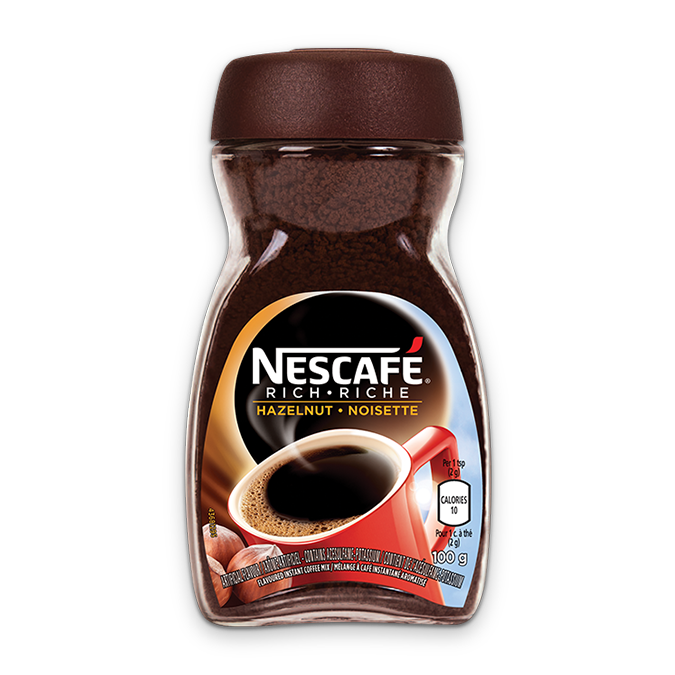

It was not a bad cup of coffee! I just really liked the bold flavors of Nescafe’s French Roast.

If you are looking for a subtler, easy afternoon cup of coffee that is gentle on the palate, Folgers Classic Roast is the way to go.

This might be because I make my coffee really strong and I was searching for the dense flavor profile that the instant coffee didn’t have. The Folgers coffee fell a little flat for me flavorwise. While on the mountain I really preferred the Nescafe French Roast because of the bold, smoky flavors. I took both of these coffees with us when we went camping recently. After multiple sips, this coffee continued to have a strong flavor. It was slightly smoky, especially in the aftertaste, and was bolder than Folgers. This coffee smelled slightly burnt and had a sharpness to its aromas and flavors. The color was less dark than Folgers and gave the appearance of a lighter coffee with more of a brown color. They did maintain much more froth on the surface, even after stirring. They did not dissolve as quickly as the Folgers coffee and did require some stirring. When I asked them to clarify, what they mean by a serving, they clarified that they are referring to a 1.8-gram teaspoon of instant coffee. Nescafe Azera caffeine content: 28mg-35mg of caffeine per serving. Only uses water to decaffeinate our coffee, which preserves all the rich, robust flavor you love.
Nescafe clasico instant coffee caffeine content full#
100 pure coffee, carefully roasted to capture the blends full flavor and aroma. The Nescafe French Roast crystals were much lighter in color and looked slightly chalky. Nescafe Gold Blend caffeine content: 23mg of caffeine per serving. For those looking for a fresh, calming start anytime of the day, but prefer to limit their caffeine intake. Although it isn’t quite as good, there are good instant coffees out there! Companies like Nescafe and Folgers have worked hard to create good quality instant coffees. The ice blocks are cut into chunks and slowly dried using a low temperature and a vacuum to suck up the water molecules.īoth of these processes try to capture the aroma and flavor of a freshly brewed cup of coffee. That extract is then rapidly chilled to -40 degrees until an ice block forms. Find calories, carbs, and nutritional contents for Instant Coffee and over 2000000 other foods at MyFitnessPal. It is cooked down and chilled at 20 degrees F until it becomes slushy. First, the brewed coffee is turned into a coffee extract. This process sounds a little more involved than spray drying. The coffee is dehydrated almost immediately and what is left of the coffee - crystals and powder - falls to the bottom of the spray zone. In this method, the brewed coffee is sprayed in a fine mist through really hot air (close to 480 degrees according to HuffPost). They take the roasted beans, brew them, and then dehydrate the liquid using one of two different drying methods: spray-dry or freeze-dry. Once I got back to the city, I knew I had to do some research and figure out what Instant Coffee really was and how it was made. I hoped that it was made from real coffee, but a part of me was worried that I was consuming a chemically altered and over-processed drink. It occurred to me while I was sipping a cup by my little mountain fire, that I didn’t actually know what instant coffee was. I couldn’t bring my French press up the mountain with me, so I brought instant coffee instead. My desire for a really good cup of coffee just kept growing and growing. Brew and I were backpacking in multiple places along the Rockies. This is because brewing methods (such as drip, percolation, and filter) leave the coffee grinds in contact with water for a much longer time - leading to more caffeine.During the month of June, Mr. Instant coffee tends to have a lower amount of caffeine than brewed coffee. Some instant coffee brands are using micro-ground coffee to boost flavor and caffeine. This is done by placing the coffee in a solution of water and then dehydrating the solution (by freeze-drying). Instant coffee is made by roasting and grinding the coffee bean and then extracting the flavor. The strength and flavor are greatly influenced by the amount of water mixed with the coffee powder. This shows that people vary the amount of coffee powder they use for their drink. Barone and Roberts * quote a value of 40-108 mg per 150 ml. No matter how much water, milk, or creamer you add to the coffee - the amount of caffeine will remain the same. According to the USDA *, 1 rounded teaspoon of instant coffee (1.8 grams in weight) contains 57 mg of caffeine. The caffeine content of coffee itself varies enormously. Here's how some popular instant coffees compare With instant coffee, caffeine measurements are based on the amount of the instant coffee powder used to make the drink.


 0 kommentar(er)
0 kommentar(er)
